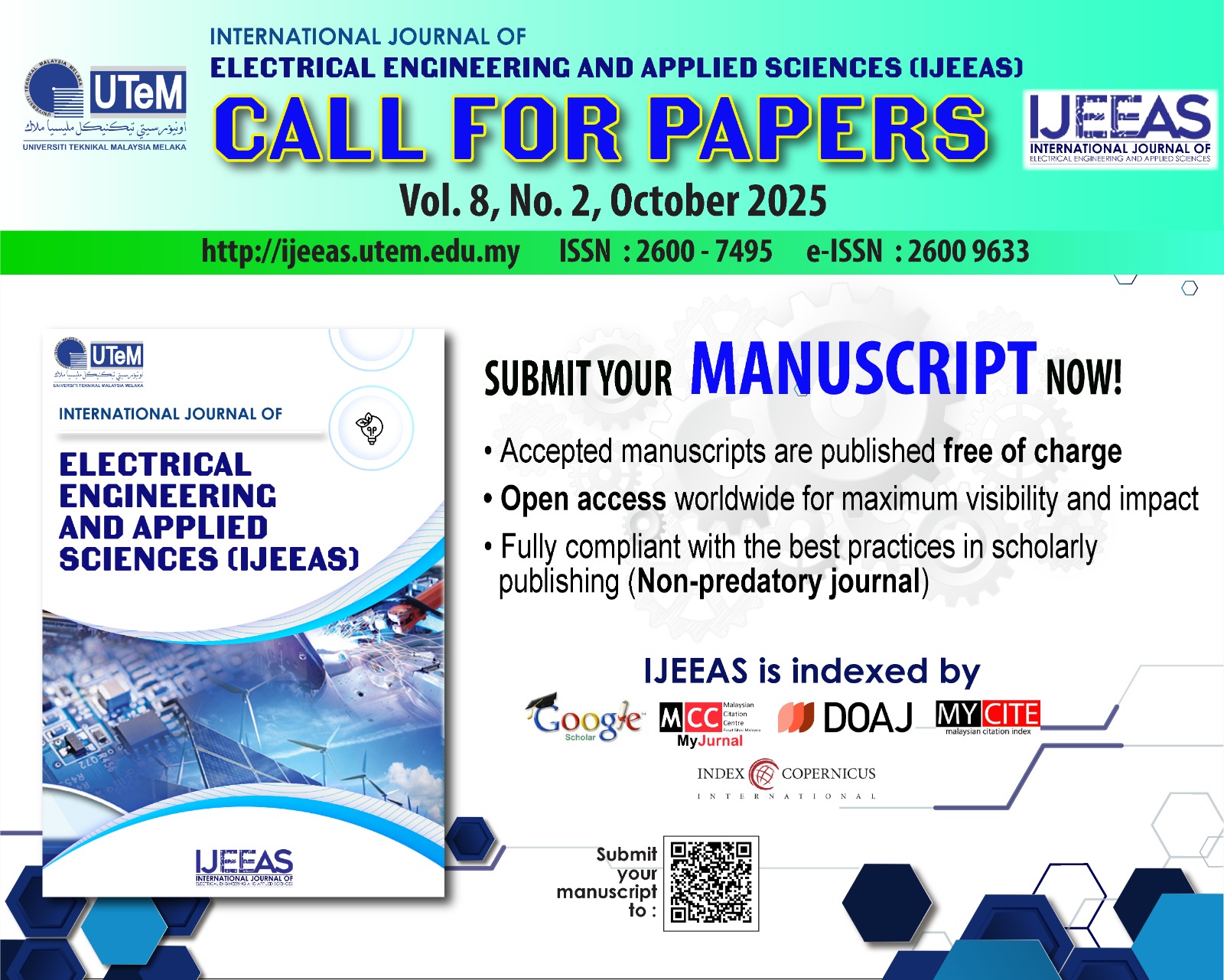Mitigation Voltage Sag Using DVR with Power Distribution Networks for Enhancing the Power System Quality
Keywords:
Power System Quality, Voltage Sag, DVR, High VoltageAbstract
The fast developments in power electronic technology have made it possible to mitigate voltage disturbances in power system. Among the voltage disturbances challenging the industry, the voltage sags are considered the most important problem to the sensitive loads. The Dynamic Voltage Restorer (DVR) is mainly used in a utility grid to protect the sensitive loads from power quality problems, such as voltage sags and swells. However, the effectiveness of the DVR can wane under unbalanced grid voltage conditions. DVR is recognized to be the best effective solution to overcome this problem. The primary advantage of the DVR is keeping the users always on-line with high quality constant voltage maintaining the continuity of production. In this paper, the usefulness of including DVR in distribution system for the purpose of voltage sag and swell mitigation is described. This paper describes the DVR operation strategies and control. The DVR operation with the distribution networks is found very efficient for detecting and clearing any power quality disturbance in distribution systems. Results of simulation using MATLAB/Simulink are demonstrated to prove the usefulness of this DVR design and operation to enhance the power system quality.
Downloads
References
Vinay Kumar Awaar, Praveen Jugge and Tara Kalyani S. (2016). Mitigation of Voltage Sag and Power Quality Improvement with an Optimum Designed Dynamic Voltage Restorer. IEEE, 978-1-4673-8888-7/16.
M. Mani Sankar and S. B. L. Seksena. (2015). A cost-effective voltage sag compensator for distribution system, Int J Syst Assur Eng Manag. DOI 10.1007/s13198-015-0373-3
M. Arun Bhaskar, S.S. Dash. C. Subramani, M. Jagadeesh Kumar, P.R. Giresh and M. Varun Kumar. (2010). Voltage Quality Improvement Using DVR. International Conference on Recent Trends in Information, Telecommunication and Computing (ITC), DOI: 10.1109/ITC.2010.80.
Nguyen Van Minh, Bach Quoc Khanh and Pham Viet Phuong. (2017). Comparative simulation results of DVR and D-STATCOM to improve voltage quality in distributed power system. Int. Conf. System Science and Engineering (ICSSE), Ho Chi Minh City, Vietnam. DOI: 10.1109/ICSSE.2017.8030864
Sang-Joon Lee, Hyosung Kim, Seung-Ki. (2005). A Novel Control Method for the Compensation Voltages in Dynamic Voltage Restorers. Applied Power Electronics Conference and Exposition, 2004. APEC '04. Nineteenth Annual IEEE.
S.Srinivasa Rao, P.Siva Rama Krishna and Dr.Sai Babu. (2017). Mitigation of voltage sag, swell and THD using Dynamic Voltage Restorer with Photovoltaic System. International Conference on Algorithms, Methodology, Models and Applications in Emerging Technologies (ICAMMAET), DOI: 10.1109/ICAMMAET.2017.8186668.
S. S. Choi, Member, IEEE, J. D. Li, and D. Mahinda Vilathgamuwa. (2005). IEEE Transactions on Power Delivery, Vol. 20, No. 3, July 2005
ZhanC, Rama chan, Arulampalam A, Fitzzer C, Barnes M and Jenkins N. (2002). Control of a battery supported dynamic voltage restorer. IEE proceedings on Transmission and Distribution, 2002, pp.533-542.
Ezoji H, Sheikholeslami A, Tabasi M and Saeednia M.M. (2009). Simulation of Dynamic Voltage Restorer Using Hysteresis Voltage Control. European Journal of Scientific Research (EJSR), 2009, pp.152-166.
O. Kueker, “Deadbeat Control of a Three-Phase Inverter with an Output LC Filter,” IEEE Trans. Power Electronics, vol. 11, no. 1, pp. 16-23, Jan. 1996.
M. Ryan, D. Lorenz, “A Synchronous-Frame Controller for a Single-Phase Sine Wave Inverter,” Conf. Rec. IEEE-APEC Ann. Meeting, pp. 813-819, 1997.
S. Lee Y. Chae, J. Cho, G. Choe, H. Mok, D. Jang, “A New Control Strategy for Instantaneous Voltage Compensator Using 3-Phase PWM Inverter,” Conf. Rec. IEEE-PESC, 1998, pp. 248-254.
M.Vilathgamuwa, A. Perera, S. Choi, “Performance Improvement of the Dynamic Voltage Restorer with Closed-Loop Load Voltage and Current-Mode Control,” IEEE Trans. Power Electronics, vol. 17, no. 5, pp. 824-834, Sep. 2002.
S Fukuda, Y.Fukuwara, H.Kamiya, “An Adaptive Current Control Technique for Active Filters,” Conf. Rec. IEEE-PCC2002, 2002, pp. 789-794.
Downloads
Published
How to Cite
Issue
Section
License
Authors who publish with this journal agree to the following terms:
- Authors retain copyright and grant the journal right of first publication with the work simultaneously licensed under a Creative Commons Attribution License that allows others to share the work with an acknowledgement of the work's authorship and initial publication in this journal.
- Authors are able to enter into separate, additional contractual arrangements for the non-exclusive distribution of the journal's published version of the work (e.g., post it to an institutional repository or publish it in a book), with an acknowledgement of its initial publication in this journal.
- Authors are permitted and encouraged to post their work online (e.g., in institutional repositories or on their website) prior to and during the submission process, as it can lead to productive exchanges, as well as earlier and greater citation of published work (See The Effect of Open Access).







